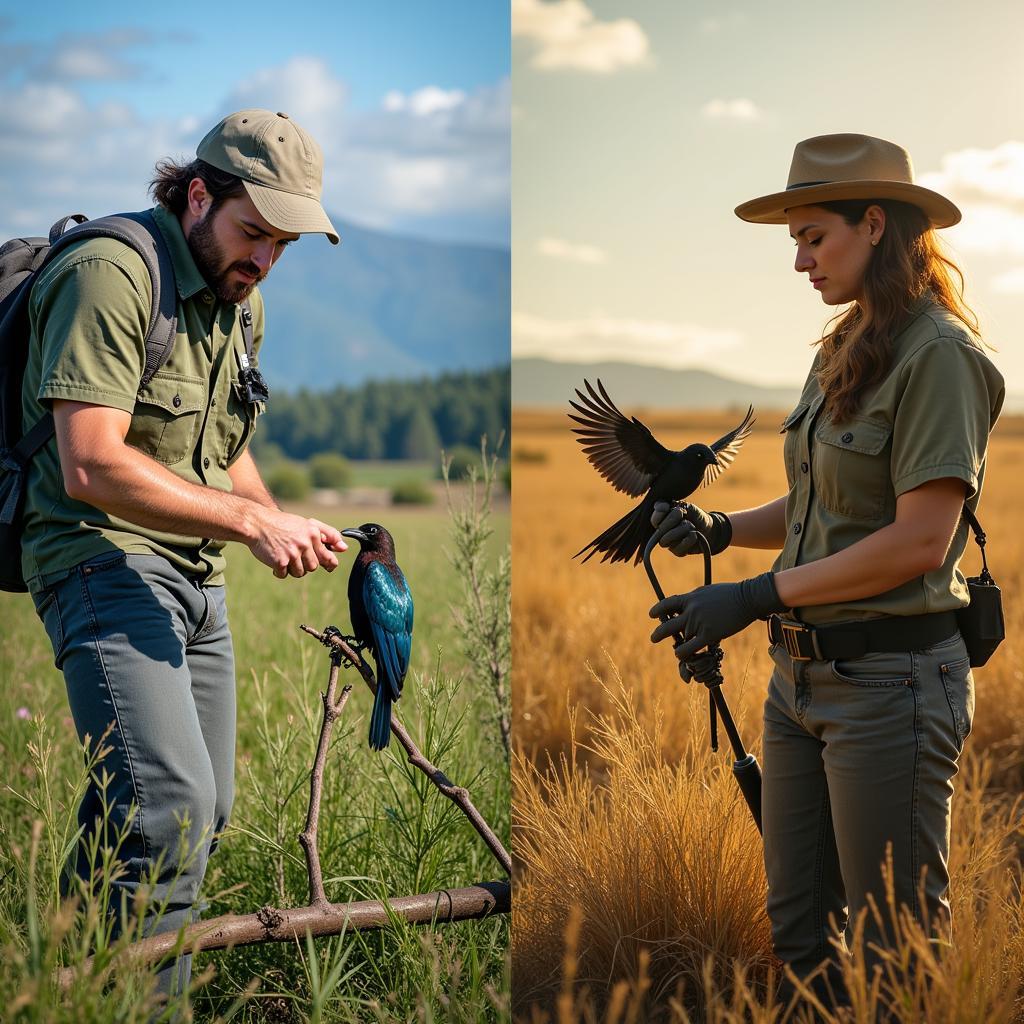The Audubon Society, renowned for its dedication to bird conservation, has a complex history intertwined with the practice of taxidermy, specifically “Audubon Society Stuffed Birds.” This term often surfaces, leading many to wonder about the organization’s past practices and current stance on using preserved specimens. Let’s explore the nuanced relationship between the Audubon Society and taxidermy, examining its evolution and impact.
The Early Days of Ornithology and Taxidermy
In the early days of ornithology, the study of birds, taxidermy was an essential tool. Before photography and advanced observation techniques, preserving birds through taxidermy was the primary method for scientists and naturalists to study different species up close. John James Audubon, the namesake of the Audubon Society, was himself a skilled taxidermist. His iconic illustrations in “The Birds of America” were made possible by posing hundreds of specimens he personally collected and preserved.
Shifting Ethical Perspectives on Taxidermy
Over time, perspectives on taxidermy have shifted significantly. While once considered a scientific necessity, the practice faced increasing scrutiny due to concerns about animal welfare and the sustainability of collecting practices. The Audubon Society, recognizing these evolving ethical considerations, has adapted its stance on taxidermy accordingly.
 Modern Bird Conservation Efforts
Modern Bird Conservation Efforts
Audubon Society’s Current Stance
Today, the Audubon Society advocates for ethical and non-invasive approaches to bird study and conservation. The organization does not condone the unnecessary killing of birds for taxidermy purposes. While historic collections, like those found in museums, provide valuable insights into bird populations and evolution, the focus has shifted towards protecting living birds and their habitats.
FAQs about Audubon Society Stuffed Birds
1. Does the Audubon Society still use taxidermy?
No, the Audubon Society does not currently engage in or endorse the practice of taxidermy. The organization prioritizes the well-being of living birds and their environments.
2. What happened to the Audubon Society’s historic bird collections?
Many historical collections are now housed in museums and institutions where they serve as valuable resources for scientific research and public education.
3. How does the Audubon Society study birds without taxidermy?
Modern ornithologists utilize a range of ethical and non-invasive techniques, including:
- Field observation: Using binoculars, spotting scopes, and remote cameras.
- Bird banding: Attaching small, lightweight tags to birds to track their movements and populations.
- Acoustic monitoring: Recording bird songs to study behavior and distribution.
Need Help with Bird Conservation?
The Audubon Society encourages everyone to contribute to bird conservation efforts. To learn more about how you can get involved, visit our website or contact us at:
Phone: 02043854663
Email: [email protected]
Address: Khu 34, Bắc Giang, 260000, Việt Nam
Our dedicated team is available 24/7 to assist you.